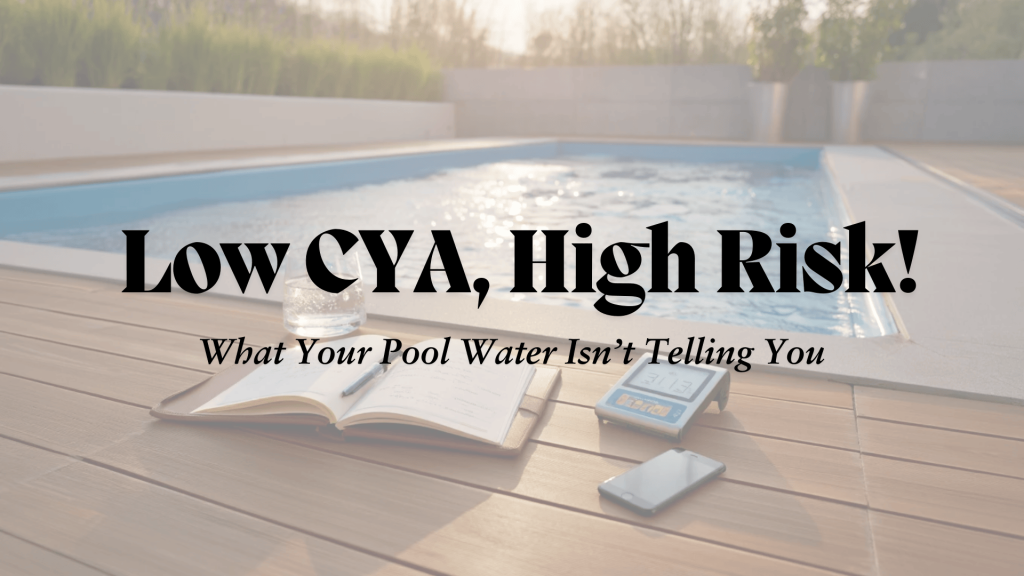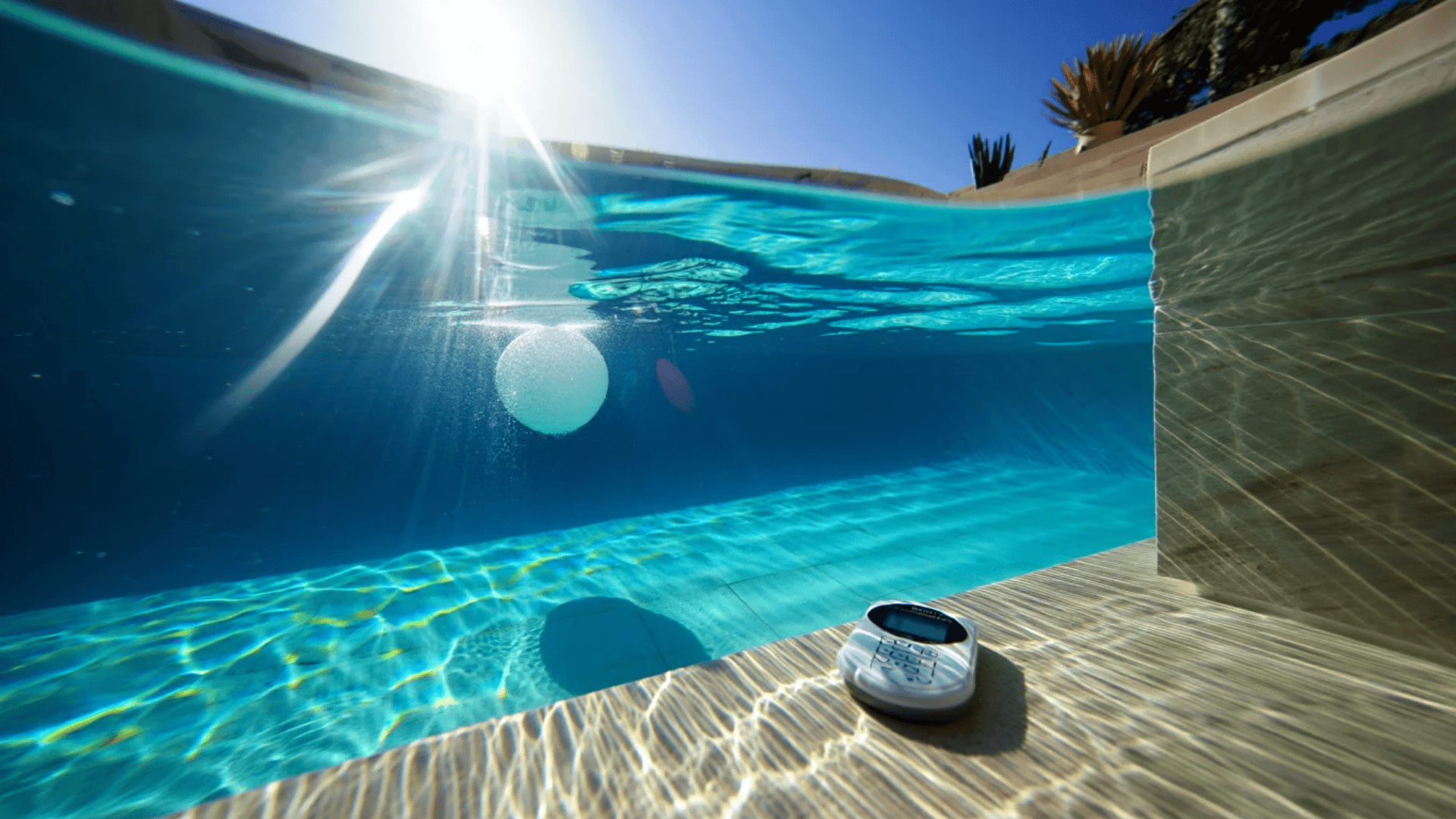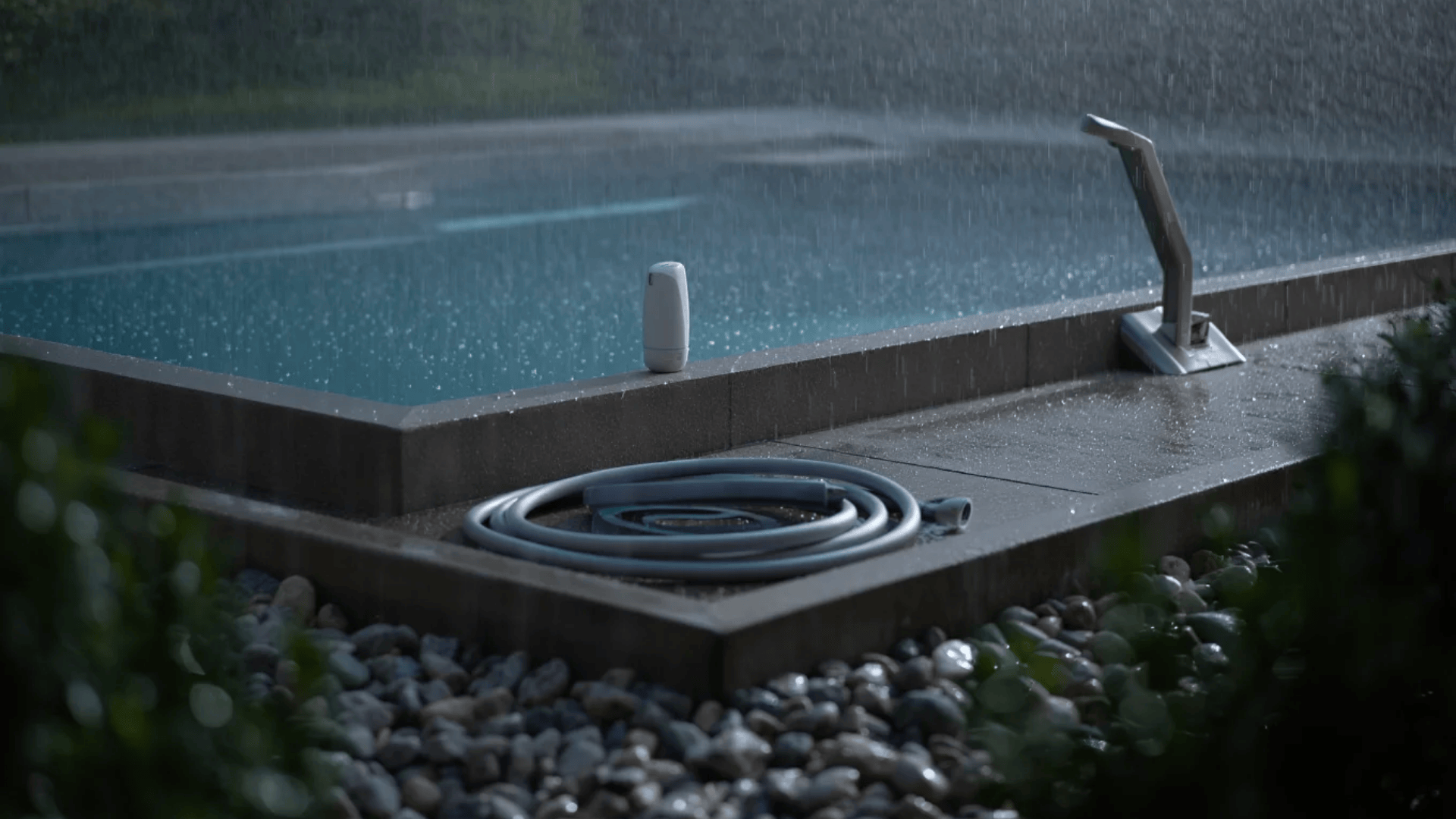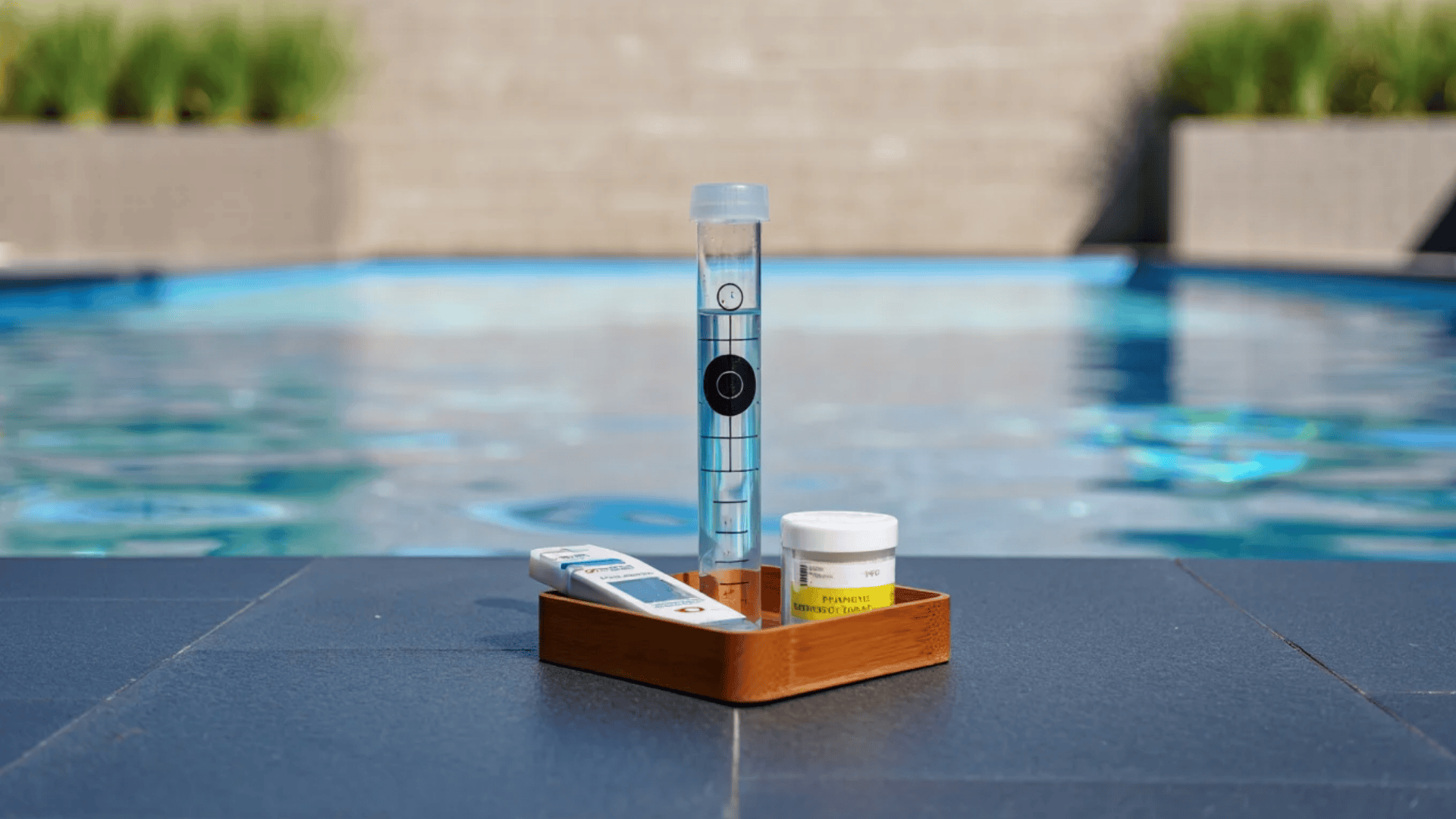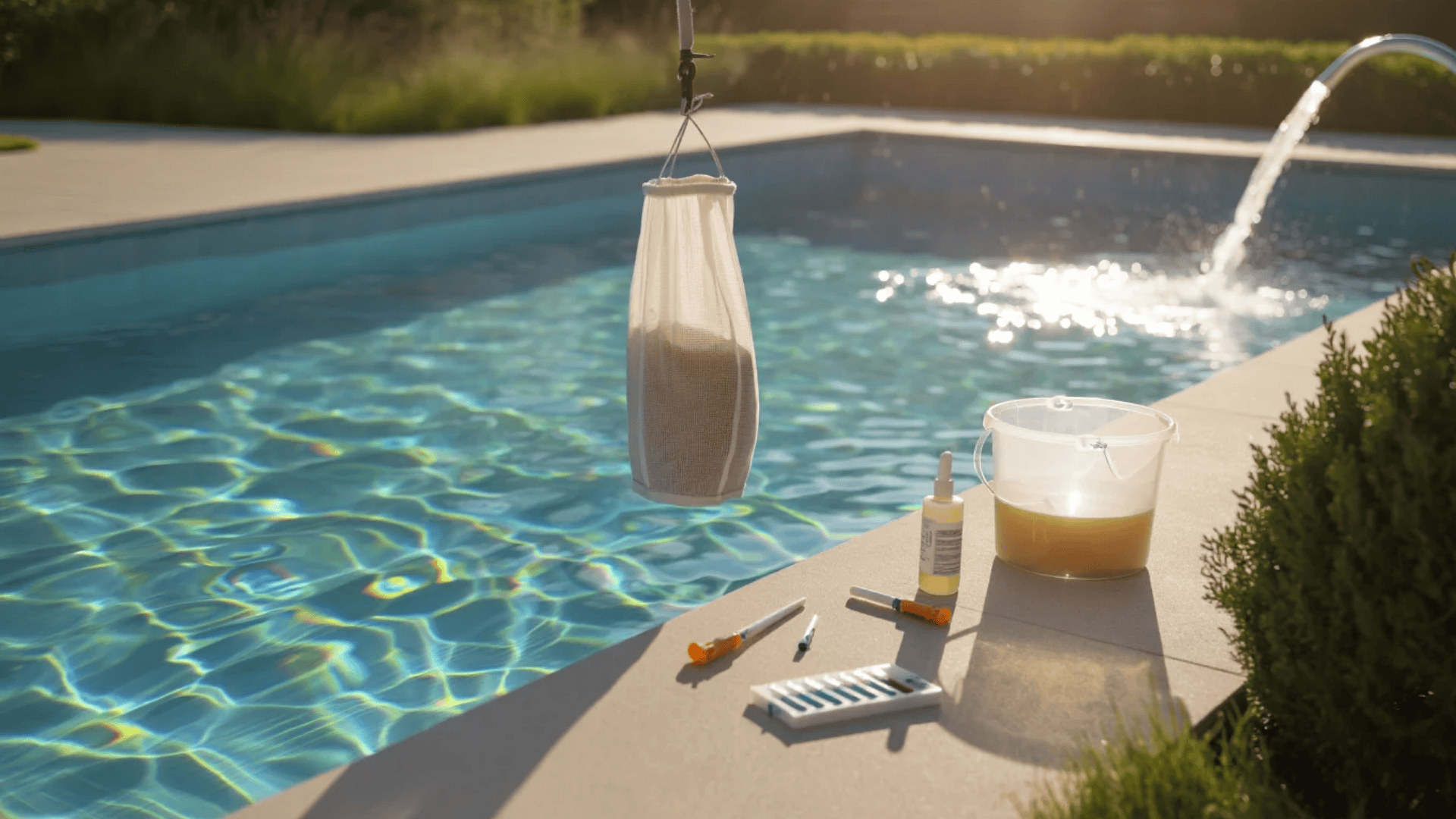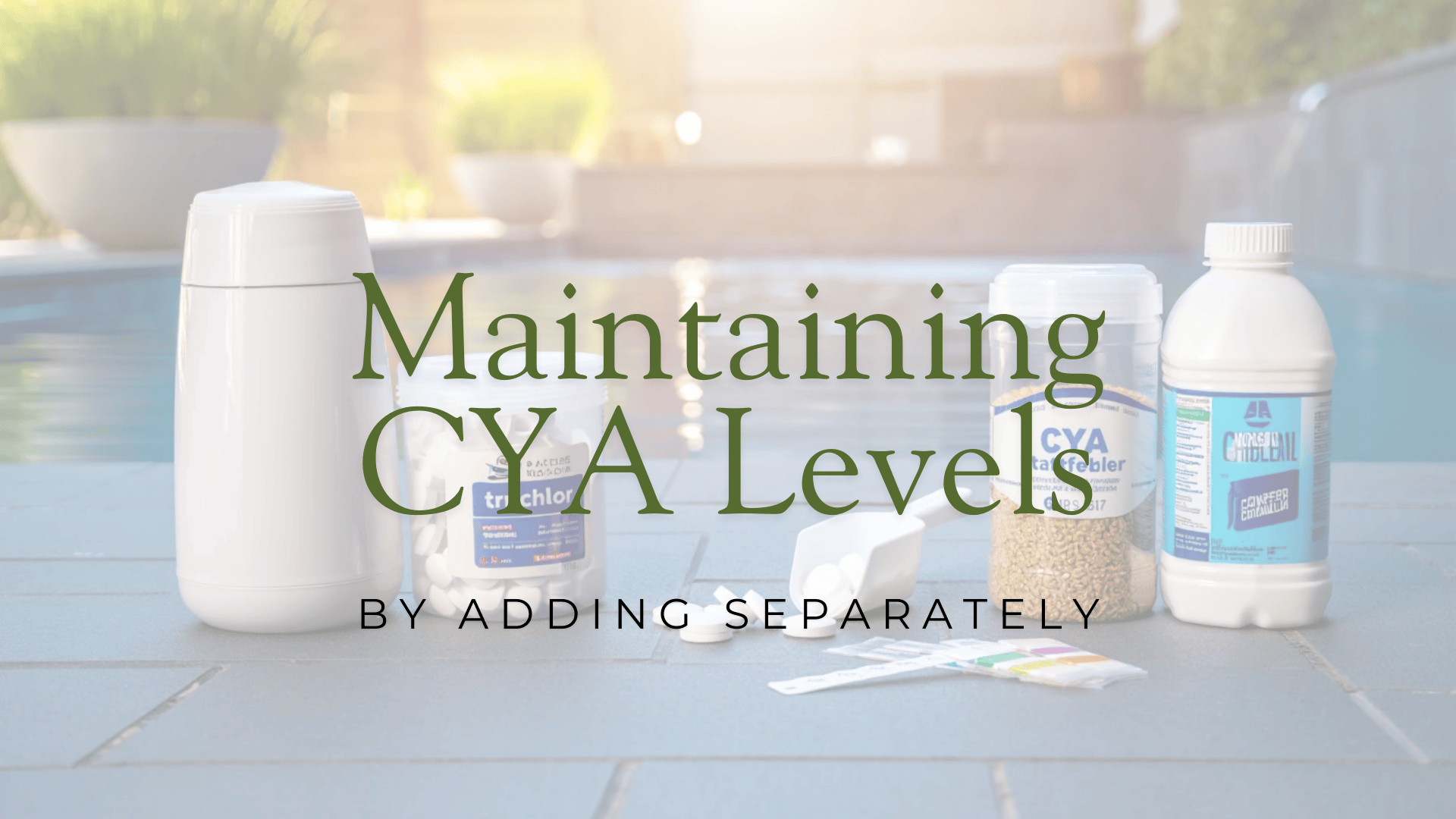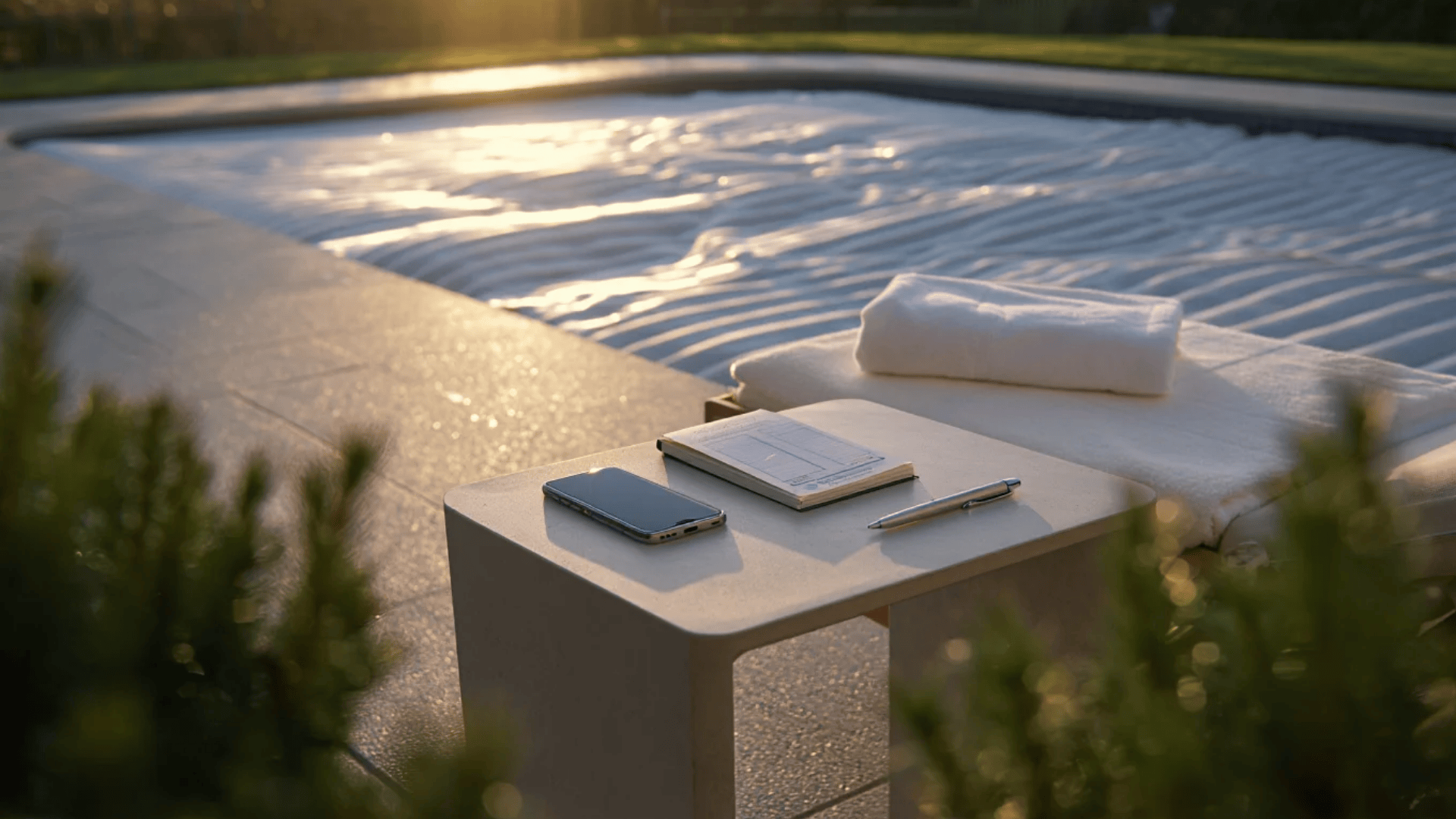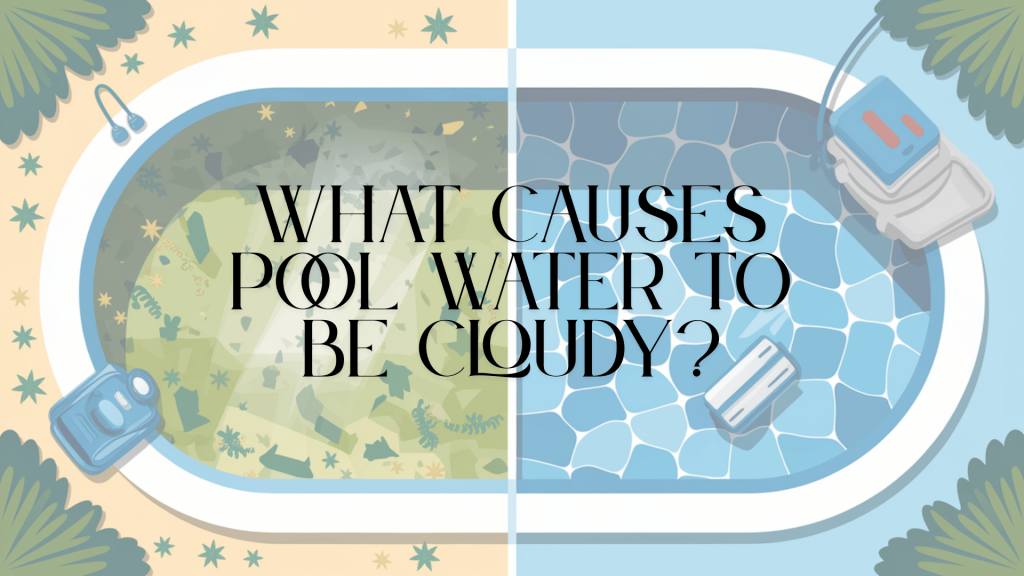Struggling with a pool that won’t stay clean despite constant chlorine additions? The culprit might be lurking invisibly in your water: low cyanuric acid levels.
When this crucial chlorine shield drops below 30 ppm, your sanitizer vanishes almost as quickly as you add it, leaving your pool vulnerable to algae invasions and cloudy water.
Many pool owners unknowingly waste hundreds of dollars on excess chlorine when the real problem is insufficient stabilizer.
Understanding this often-overlooked chemical balance could be the difference between a crystal-clear pool and a frustrating summer of constant maintenance.
Get ready to solve the mystery of disappearing chlorine and take back control of your pool’s chemistry once and for all.
What Happens If Cyanuric Acid is Too Low?
When your pool’s cyanuric acid (CYA) levels drop too low, you’re basically leaving your chlorine unprotected in the summer sun.
Without this crucial shield, your pool becomes vulnerable to a cycle of constant sanitizing that yields frustrating results.
Your efforts to maintain clean, clear water can quickly turn into a losing battle against nature itself. Let’s examine what this means for your pool and how to address the issue.
1. The Sunscreen Effect
Think of CYA as sunscreen for your chlorine. Without enough protection (below 30 ppm), the sun’s UV rays quickly break down chlorine molecules.
In fact, unprotected chlorine can lose up to 90% of its effectiveness in just 2 hours of bright sunlight!
2. Warning Signs of Low CYA
- Chlorine levels that drop rapidly after treatment
- Difficulty maintaining proper sanitization
- Sudden algae blooms despite regular chlorination
- Water that turns cloudy or hazy quickly
- Increased need for chlorine (and higher costs)
These issues often appear suddenly during hot, sunny days when UV exposure is at its strongest.
3. The Cost Factor
Low CYA doesn’t just affect your pool’s cleanliness—it also impacts your wallet.
| IMPACT OF LOW CYA | THE NUMBERS |
|---|---|
| Chlorine loss rate | Up to 8× faster |
| Extra chlorine needed | 2-3× normal amount |
| Potential algae treatments | $50-200 per incident |
Adding more chlorine without addressing low CYA is like pouring money down the drain.
Why is Cyanuric Acid Important in Pools?
Pool chemistry can be tricky, but understanding the role of CYA makes maintenance much simpler. This unsung hero works silently to keep your water clean and safe.
CYA functions as protection for your chlorine. Much like sunblock shields your skin, cyanuric acid forms a molecular bond with chlorine, preventing UV rays from breaking it down. This protection is vital – without it, sunlight can destroy up to 90% of your pool’s chlorine within just 2 hours!
For outdoor pools, this protection means less frequent chlorine additions, more consistent sanitizing power, and ultimately lower maintenance costs. Indoor pools typically don’t require cyanuric acid, as they are not exposed to direct sunlight.
Smart pool owners follow the 7.5% rule: your free chlorine target should be about 7.5% of your CYA level. This ensures proper sanitizing power while maintaining that crucial UV protection.
Causes of Low Cyanuric Acid in a Pool
Your pool’s CYA levels don’t remain stable on their own. Several common factors can cause these levels to drop unexpectedly.
1. Natural Dilution Sources
Water that enters your pool without CYA naturally lowers concentration levels. The main culprits include heavy rainfall, regular backwashing of your filter system, and even splash-out from swimmers. Each gallon of fresh water reduces the overall concentration of chemicals present.
A single heavy rainstorm can dilute your CYA by 5-10%, while a busy pool party with lots of splashing might lower levels by 2-3% in just one afternoon.
2. Chlorine Type Matters
Not all chlorine products contain stabilizers. Liquid chlorine, calcium hypochlorite, and salt-generated chlorine clean your water but do nothing to maintain CYA levels. Using these exclusively means your CYA levels will steadily decline.
Many pool owners mistakenly assume their chlorination method is adding CYA when it isn’t. This misconception leads to wondering why their chlorine seems less effective over time.
3. Seasonal Changes and Maintenance
Many pool owners face CYA challenges at specific times, such as when spring opens after winter covers are removed or following major storms that necessitate water replacement.
When you partially drain and refill your pool for maintenance reasons, you’re also removing a portion of your CYA. A 25% water change means you’ll lose roughly 25% of your stabilizer as well.
These reset moments often result in significantly reduced CYA levels, which require prompt attention to maintain proper pool chemistry balance.
How to Test for Cyanuric Acid Accurately?
Obtaining accurate CYA readings is crucial for maintaining a pool properly. For best results, test your CYA levels weekly during active swimming months to catch declining levels before they cause problems.
Not all test options provide the same reliability:
| TEST METHOD | ACCURACY | EASE OF USE |
|---|---|---|
| Liquid turbidity test | High | Moderate |
| Test strips | Moderate | Easy |
| Digital testers | Very high | Easy |
The liquid turbidity test, which involves looking for the black dot to disappear, offers the best balance of accuracy and cost for most home pool owners.
Most residential pools should maintain CYA between 30-50 ppm. This range provides chlorine protection without risking “chlorine lock” at higher levels. When using salt systems, staying within the recommended range of 70-80 ppm may be advised by some manufacturers.
Be sure to retest your CYA after heavy rain events or when adding significant amounts of fresh water. This proactive approach prevents unexpected sanitizing failures.
Step-by-Step: How to Raise Cyanuric Acid Levels?
Boosting your pool’s CYA level is straightforward when you follow these steps. This guide will walk you through the process from start to finish.
Step 1: Calculate Your Pool Volume
First, determine exactly how much water your pool holds:
- For rectangular pools: Length × Width × Average Depth × 7.5 = Gallons
- For round pools: Diameter × Diameter × Average Depth × 5.9 = Gallons
This calculation is essential for accurate dosing. Getting it wrong can lead to under- or over-stabilizing your pool.
Step 2: Choose Your Stabilizer Type
You have two main options to consider. Granular stabilizer is more cost-effective but dissolves slowly (taking 2-3 days), while liquid stabilizer disperses faster throughout the pool but comes at a higher cost.
Most home pool owners opt for granular filtration due to its better value and greater availability.
Step 3: Prepare Your Pool Chemistry
Before adding any stabilizer, test your current CYA level and adjust your pH to 7.2-7.6. Ensure the total alkalinity is within the proper range and clean your filter system if necessary.
These preparatory steps help the CYA dissolve properly and integrate into your water chemistry.
Step 4: Apply the Stabilizer
For a granular stabilizer, use one of these methods:
Sock Method:
- Place the measured amount in a clean sock or mesh bag
- Tie it closed securely
- Hang in front of the return jet or in the skimmer basket
- Allow to dissolve for 24+ hours
Pre-dissolution Method:
- Fill a clean bucket with warm water
- Slowly add stabilizer while stirring
- Pour the mixture around the pool perimeter
- Focus on deeper areas
If using liquid stabilizer, pour it slowly around the pool’s edge, concentrating on the deep end and avoiding adding near skimmers.
Step 5: Circulate and Wait
After adding stabilizer, run your filter pump continuously for 24-48 hours. Don’t backwash your filter for at least 3-4 days to allow time for complete dissolution and mixing.
Patience is crucial here, as CYA dissolves very slowly compared to other pool chemicals.
Step 6: Retest and Adjust
After waiting, retest your CYA levels. If they’re still too low, calculate how much more you need and repeat the process with a smaller amount.
Continue testing until you reach the ideal range of 30-50 ppm. Remember that it’s better to add too little than too much, as reducing high CYA levels can be difficult without draining water.
Stabilized Chlorine vs. Adding CYA Separately
The way you add CYA to your pool impacts long-term water chemistry. Products like trichlor tablets and dichlor granules contain both chlorine and cyanuric acid in a single package, offering a convenient one-step application.
While stabilized chlorine automatically maintains some CYA level, it can lead to high CYA levels over time and may eventually require partial water replacement.
Using unstabilized chlorine products with separate CYA additions gives you precision control. This approach prevents CYA buildup issues and is more cost-effective for larger pools, though it requires more testing and monitoring.
Most experienced pool owners use a hybrid approach: beginning the season with some stabilized chlorine, then switching to unstabilized plus separate CYA as needed. This flexible strategy keeps your pool protected while avoiding chemical imbalances.
Preventing CYA Fluctuations Long-Term
Maintaining stable CYA levels saves time and money. With a few simple strategies, you can avoid the constant ups and downs that plague many pool owners.
1. Establish a Testing Routine
The foundation of stability is knowledge. Establish a weekly testing schedule during swim season and a monthly during off-season.
Consistent monitoring enables you to identify trends before they become problems, allowing for small adjustments rather than major corrections.
Most successful pool owners pick a specific day each week to test all chemicals, making it part of their regular maintenance routine.
2. Use Protective Measures
Using a pool cover when the pool isn’t in use reduces both water evaporation and UV exposure, helping maintain more consistent chemical levels, including CYA. This simple tool can extend the life of your chemicals by 35-50% during peak summer months.
Covers also minimize the amount of debris entering your pool, reducing the need for frequent backwashing that can lower CYA levels.
3. Track Your Pool’s History
Keep records of your chemical additions and test results in a simple notebook or smartphone app. This history helps identify patterns and predict when CYA adjustments might be needed.
Many pool owners notice seasonal patterns—CYA drops faster during rainy spring months or during peak summer heat. With good records, you can anticipate these changes and make proactive adjustments.
4. Use Technology to Your Advantage
Many pool maintenance apps now include CYA calculators that help determine exactly how much product to add based on your current readings and pool size, eliminating guesswork and preventing wasteful overdosing.
These digital tools also often provide reminders for testing and maintenance tasks, helping you stay on top of your pool care routine without having to remember everything yourself.
The Bottom Line
Low cyanuric acid doesn’t have to spell disaster for your pool enjoyment. Armed with the right testing methods and quality stabilizer products, you can easily maintain optimal CYA levels between 30 and 50 ppm.
Remember that finding balance is key—too little leaves chlorine unprotected, while too much can render your sanitizer completely ineffective.
Regular testing, especially after rainfall or heavy pool use, helps prevent costly problems before they start.
By understanding the relationship between CYA and chlorine, you’ll enjoy a cleaner, clearer pool with fewer chemicals and less hassle.
Your wallet will thank you, and you’ll spend more time swimming and less time troubleshooting water chemistry issues.

